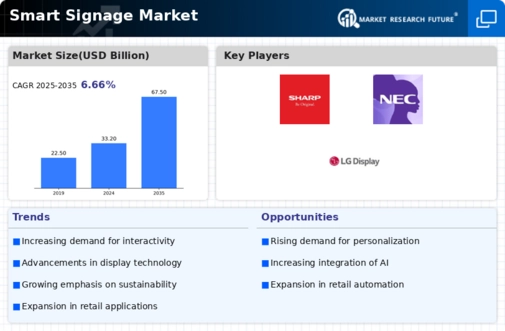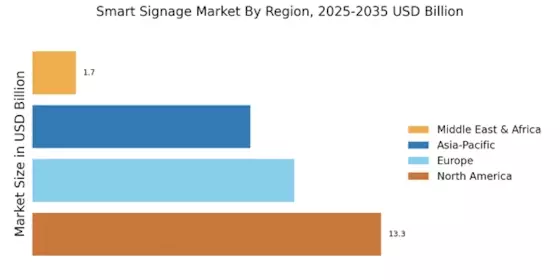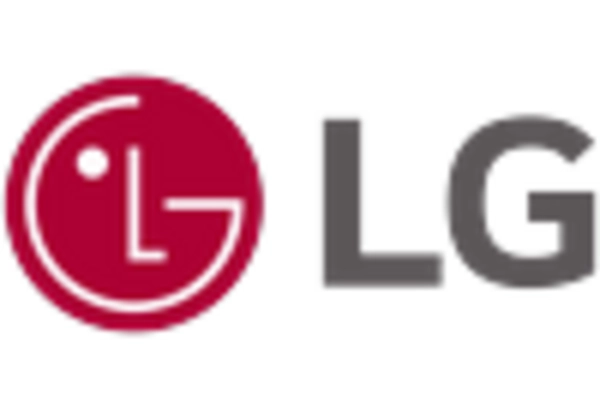Rising Demand for Digital Advertising
The Smart Signage Market is experiencing a notable increase in demand for digital advertising solutions. Businesses are increasingly recognizing the effectiveness of digital signage in capturing consumer attention and enhancing brand visibility. According to recent data, the digital signage market is projected to reach USD 31.71 billion by 2026, indicating a compound annual growth rate of 7.5%. This growth is driven by the need for dynamic content that can be updated in real-time, allowing businesses to respond swiftly to market trends and consumer preferences. As companies seek innovative ways to engage customers, the Smart Signage Market is likely to benefit from this shift towards digital advertising, providing opportunities for growth and expansion.
Increased Focus on Customer Experience
In the competitive landscape of retail and service industries, there is an increased focus on enhancing customer experience, which is significantly influencing the Smart Signage Market. Businesses are leveraging smart signage to create immersive and personalized experiences for consumers. By utilizing data analytics and customer insights, companies can tailor content to specific audiences, thereby improving engagement and satisfaction. This trend is reflected in the growing investment in customer experience technologies, which is projected to reach USD 14.5 billion by 2026. As organizations prioritize customer-centric strategies, the Smart Signage Market is likely to see a surge in demand for innovative signage solutions that facilitate meaningful interactions.
Growing Adoption of Smart Cities Initiatives
The Smart Signage Market is benefiting from the growing adoption of smart city initiatives worldwide. As urban areas strive to enhance infrastructure and improve the quality of life for residents, smart signage solutions are being integrated into public spaces for better communication and information dissemination. These systems can provide real-time updates on traffic, weather, and local events, contributing to more efficient urban management. According to industry reports, investments in smart city projects are expected to reach USD 2.57 trillion by 2025, creating substantial opportunities for the Smart Signage Market to expand its footprint in urban environments.
Regulatory Support for Digital Transformation
Regulatory support for digital transformation initiatives is emerging as a key driver for the Smart Signage Market. Governments and regulatory bodies are increasingly recognizing the importance of digital signage in promoting information accessibility and enhancing public communication. Policies that encourage the adoption of digital technologies in public spaces are likely to stimulate market growth. For instance, initiatives aimed at modernizing transportation systems and public information displays are paving the way for smart signage solutions. As regulatory frameworks evolve to support digital innovation, the Smart Signage Market stands to gain from increased investments and adoption across various sectors.
Technological Advancements in Display Solutions
Technological advancements are playing a pivotal role in shaping the Smart Signage Market. Innovations in display technologies, such as OLED and LED, are enhancing the visual appeal and functionality of signage solutions. These advancements enable higher resolution displays, improved energy efficiency, and greater durability, which are essential for outdoor and high-traffic environments. The integration of touch and interactive features is also becoming more prevalent, allowing for a more engaging user experience. As these technologies continue to evolve, the Smart Signage Market is expected to witness increased adoption across various sectors, including retail, transportation, and hospitality, further driving market growth.

















